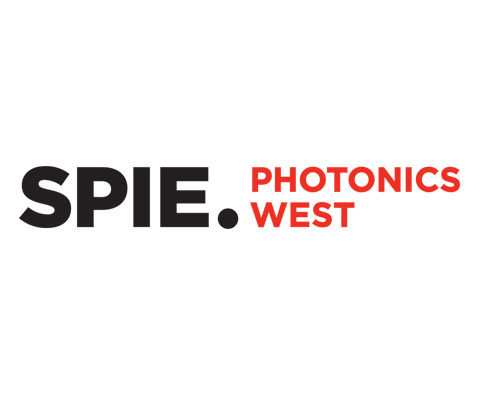SPIE Photonics West | January 25 to 30, 2025
SPIE Photonics West 2025
The Fraunhofer Institute for Applied Optics and Precision Engineering IOF drives innovation and develops future technologies in a vast field of photonics research. Our institute conducts application-oriented research and development along the entire photonic innovation chain and offers partners in optics and photonics customized solutions for individual challenges.
From January 25 to 30, 2025 our institute will be presenting its recent developments at the SPIE Photonics West 2025 in San Francisco.
We cordially invite you to visit us at one of the largest international trade fairs in the field of optics and photonics. You will find us at the German Pavilion at booth 4205-31.
Learn more about the exhibition and event highlights below.
Our researchers are very much looking forward to meeting you personally!
Discover the variety of photonics research with us
Themes and Exhibits at the SPIE Photonics West 2025
From special coatings for optical components, over high-speed capture of 3D data to quantum communication technologies: Our institute is going to present various exhibits of our core competence - developing innovative solutions with light for a wide range of applications.
Optical Multiplexer for Quantum Cryptography
Eight light signals are combined into one signal in a glass chip with laser-written waveguide channels using integrated couplers. The chip forms the central signal combiner in a photon source for quantum key distribution (QKD), which generates indistinguishable polarization-encrypted signal and decoy photons.
The waveguide chip is actively thermally controlled within a Kovar frame with temperature probes and thermoelectric elements. It is embedded between a stack of precision-engineered heat sinks to integrate the chip without voids using a thermally conductive intermediate layer. The optical input is achieved with lithographic microlenses that couple light into the waveguide channels, whereas the output is via a coupled fiber.
Double Beam Displacer Entangled Photon Source
Millions of photon pairs per second: The emerging field of quantum technologies with applications in quantum computing and quantum communication are largely based on photonic quantum sources. To realize these applications, we require the use of small and efficient entangled photon sources.
Here, we show an engineering example of a compact and high performant entangled photon source. It can operate at millions of photon pairs per second per milliwatt of laser pump power, while its broadband light spectrum allows multiplexing capabilities. The source architecture has been tested for entanglement distribution over intercity fiber networks in Germany for applications in quantum cryptography.
goCRASH3D: The 3D Sensor That Survives
the Crash Test
Fraunhofer IOF has been developing systems for the high-speed capture of 3D data for many years. With goCRASH3D, we are now presenting a new system that records 3D data during crash tests inside the test vehicle. It shows the deformation and movement of vehicle components during a collision in a way that was previously not possible or only possible to a limited extent.
The goCRASH3D system uses two cameras and powerful lighting to capture up to 12,000 2D images per second with 512 x 512 pixels, from which around 1,200 3D images are calculated. The goCRASH3D system was developed for and with the automotive industry. However, other applications are imaginable, for example in the safety sector or in sports medicine.
Laser and Fiber Technology
Fibers & Preforms
High-quality MCVD fiber preforms are engineered for optimal laser performance, featuring matched refractive index to enable largest single-mode core diameters. These preforms exhibit low photodarkening, enhancing their longevity and reliability in laser applications. With a remarkable laser efficiency exceeding 90%, they are designed to deliver superior output and performance, making them the ideal choice for advanced laser systems.
Deep Hole Drilling in Glass
Deep-hole drilled preforms are innovative glass structures featuring precisely drilled holes in fused silica to be left as air-holes or filled with rare earth doped material for fiber manufacturing. It could be the preferred method for mass production as automated deep-hole drilling ensures high positional precision and reproducibility. It also allows the creation of complex designs with intricate cladding structures, reducing manufacturing complexity while maintaining quality and efficiency.
AR-plas2 with antifogging properties
Nature as a model for innovation – the AR-plas2 structures developed at Fraunhofer IOF are similar to those found on the eyes of night-flying moths. The technologies offer low-loss nanostructured layers with combined antireflective (AR) and antifogging (AF) properties. They are suitable for vacuum conditions, laser as well as quantum applications from the VIS to NIR spectral range.
Atomic Layer Deposition
Atomic layer deposition (ALD) can be used in the coating of optical components such as aspheres, convex and concave lenses or spherical lenses. It is particularly suited for strongly curved, three-dimensional, micro- or nano-structured components. A key advantage of Atomic Layer Deposition is the precise control of layer thickness and composition. This enables conformal and homogeneous coatings.
CarbonSat mission - spectrometer grating and directly bonded grating-prism-assembly
In order to improve spectroscopic systems, for example for Earth observation, in terms of compactness and effectiveness as well as achieving high thermo-mechanical stability and thus high wavefront accuracy, combined with high dispersion and a wide range of applications, a technology for direct plasma-activated bonding of glass optics with inscribed gratings was developed. In the CarbonSat project, a planarity of the bonding partners of less than 20 nm and a surface roughness of less than 0.25 nm were achieved.
Talks and Presentations at the SPIE Photonics West 2025
Use the opportunity to discover actual research and innovations of Fraunhofer IOF by way of five lectures held by our scientists. Furthermore, meet our scientists and staff at our booth and let them show you their recent development live. Find a comprehensive overview of our presentations here:








